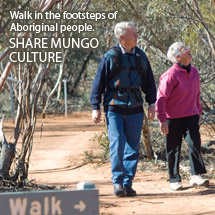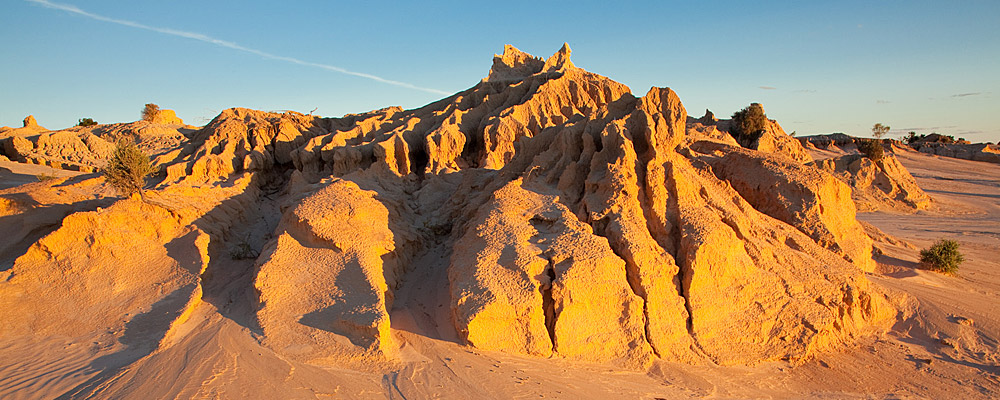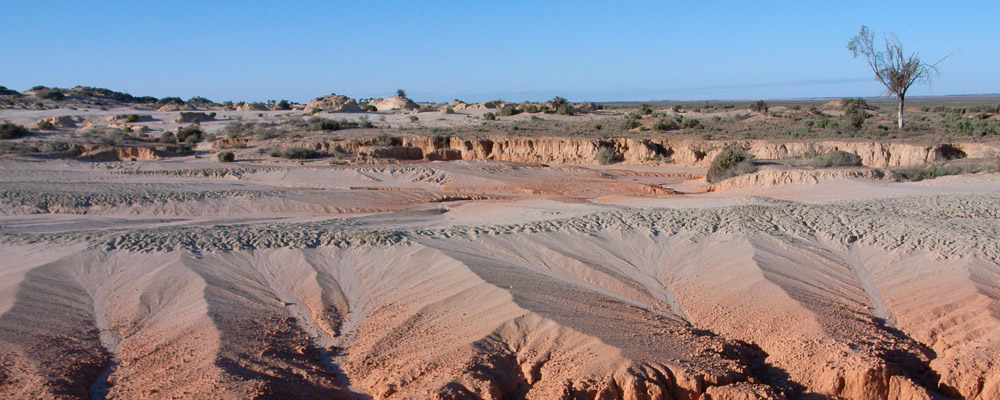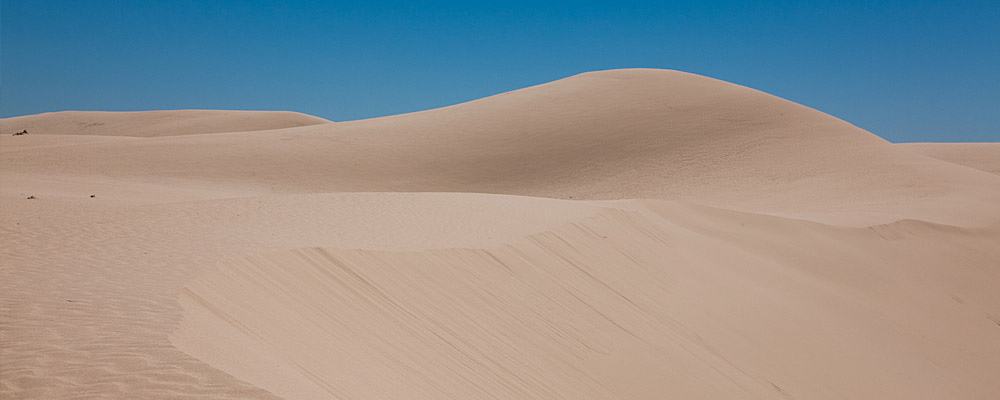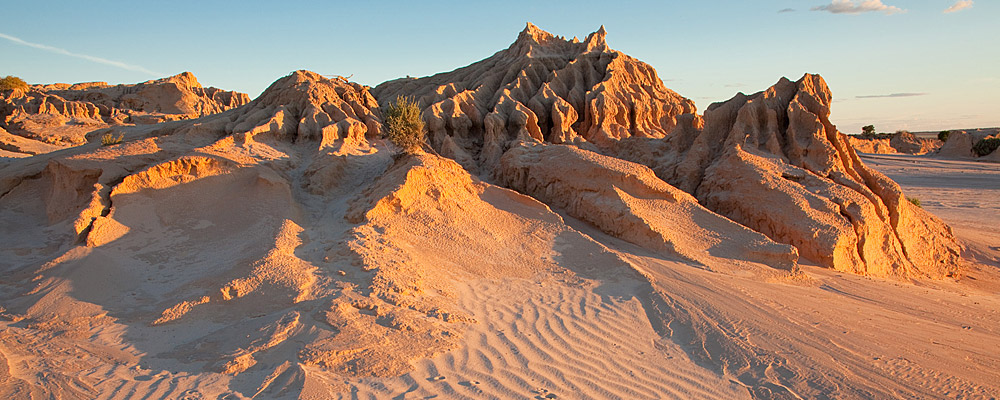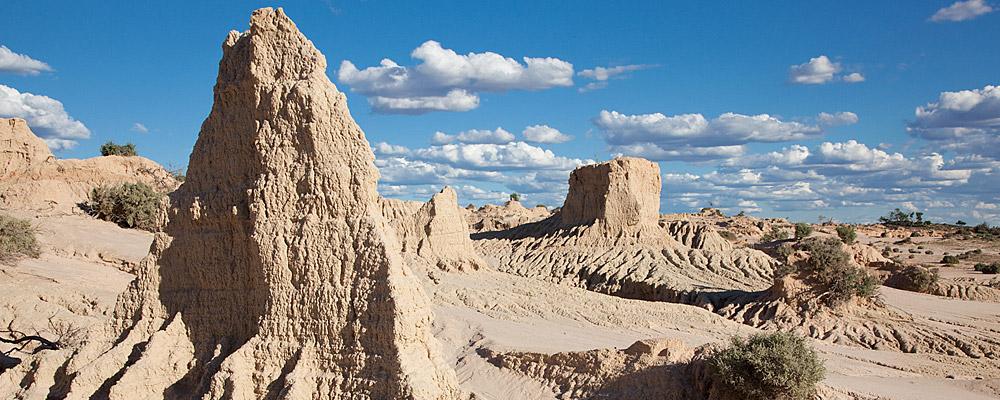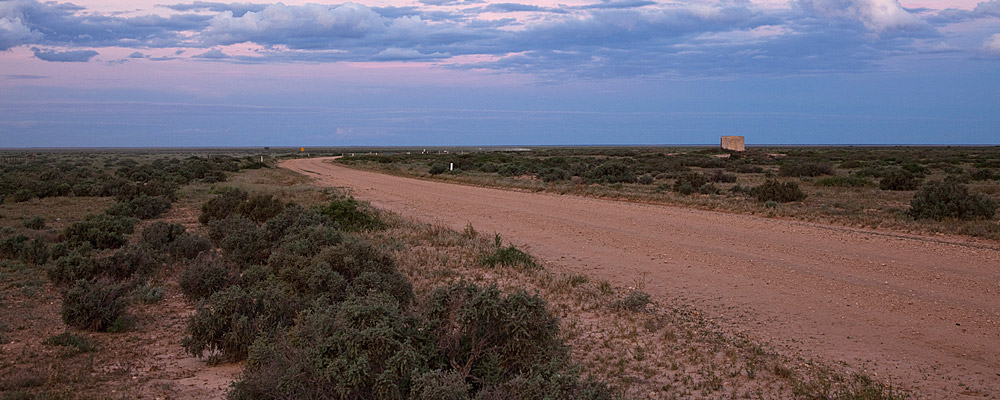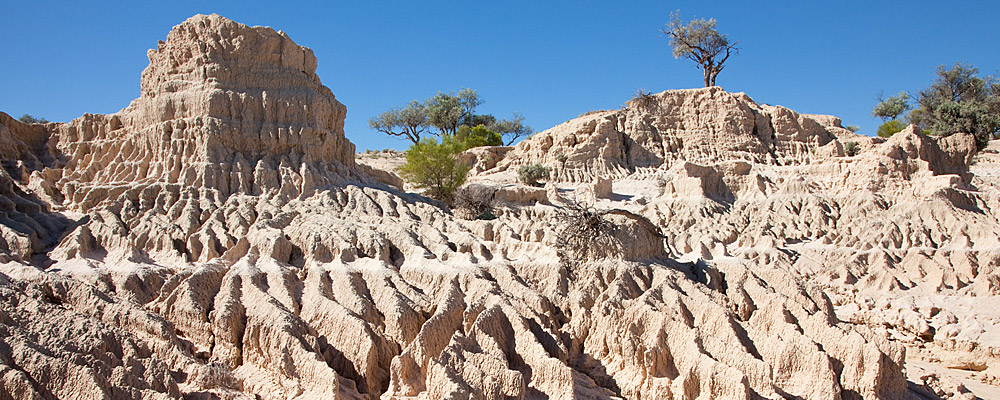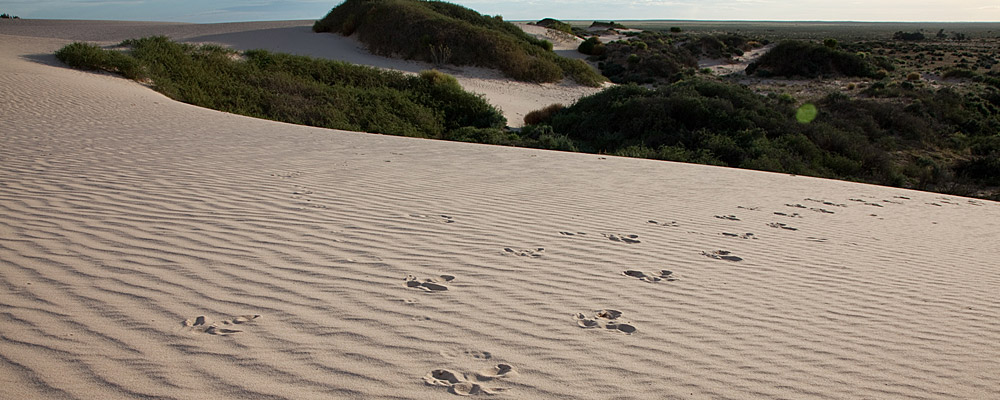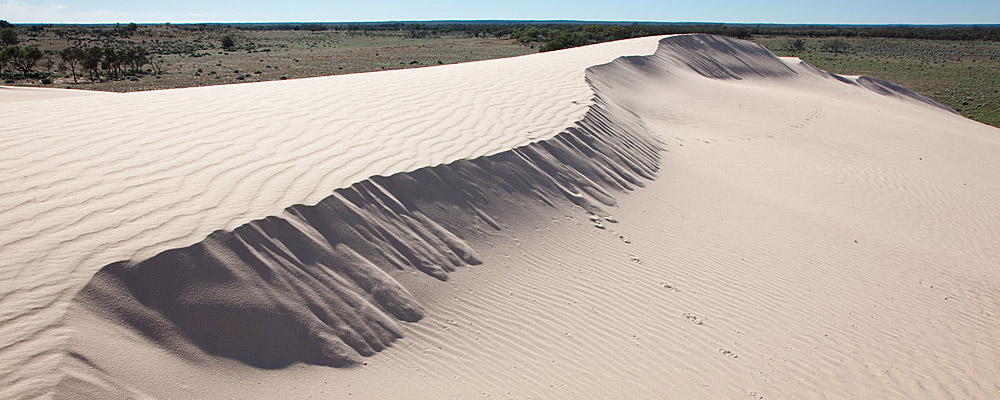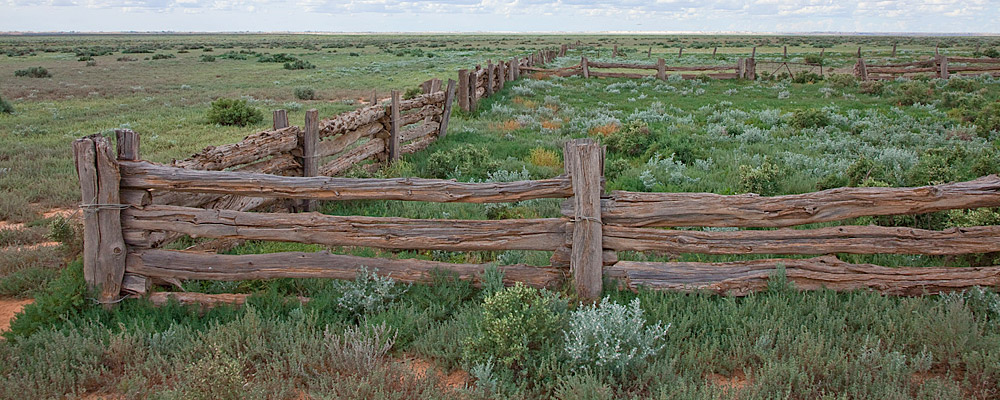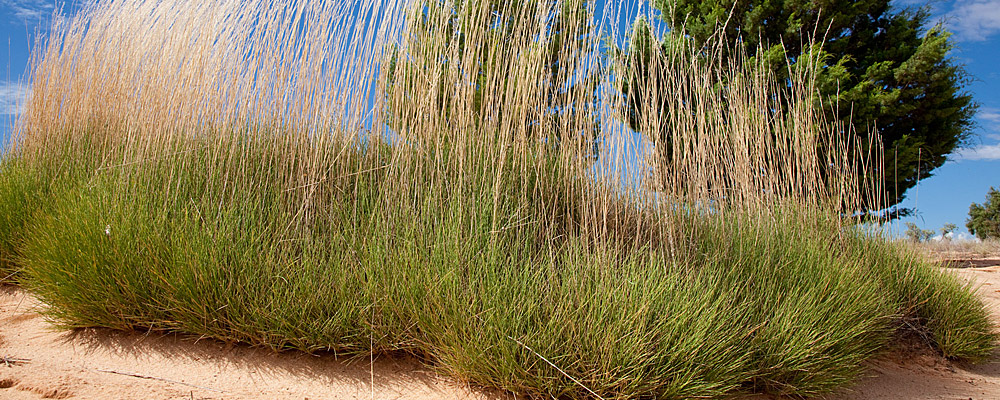Understand Mungo
Mungo's Environment Today

The Mungo landscape is of low relief and subdued. Even the spectacular Walls of China and the sand dunes are on a small scale. But hidden in this subtlety lie great depths of meaning and signs of the tumultuous events of the past. The vast spaces, big skies and earthen colours evoke a sense of endurance that reaches over the horizon to times long gone but with us still.
The Mungo environment we see today is the result of complex natural forces acting over many thousands and millions of years. For the last 45,000 years at least, we humans have witnessed those changes. We can now see that the modern landscape, with all its plants and animals, is just a snapshot in time and is bound to keep changing.
The story of the past can be read in the land as we see it today. The plants and animals have evolved from species that have gone before, and landscape changes have left evidence in the lakebeds, the lunettes, the dunes and the sediments. More recently, humans have influenced the landscape, vegetation and wildlife, perhaps subtly in Aboriginal times, and much more forcefully since white settlement.
Mungo National Park is most important for its connected environmental and human histories, but it also protects an important sample of the surviving landforms, flora and fauna of the Murray Basin's mallee plains.
Here you can explore Mungo as it is now, while thinking about what has gone before (see Ancient Mungo Environments).
